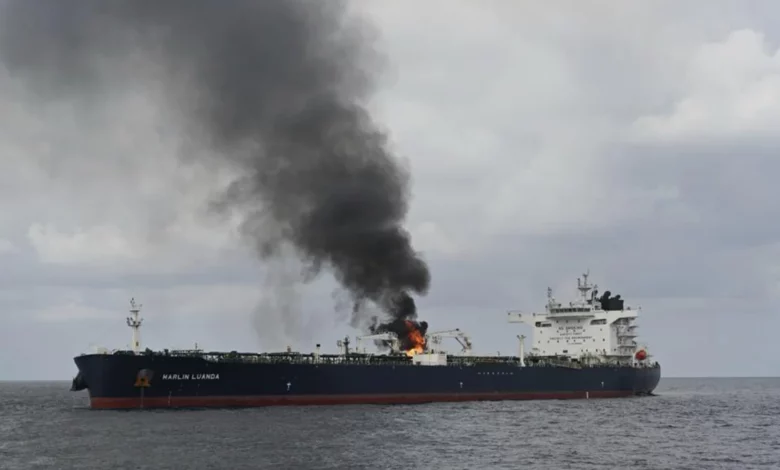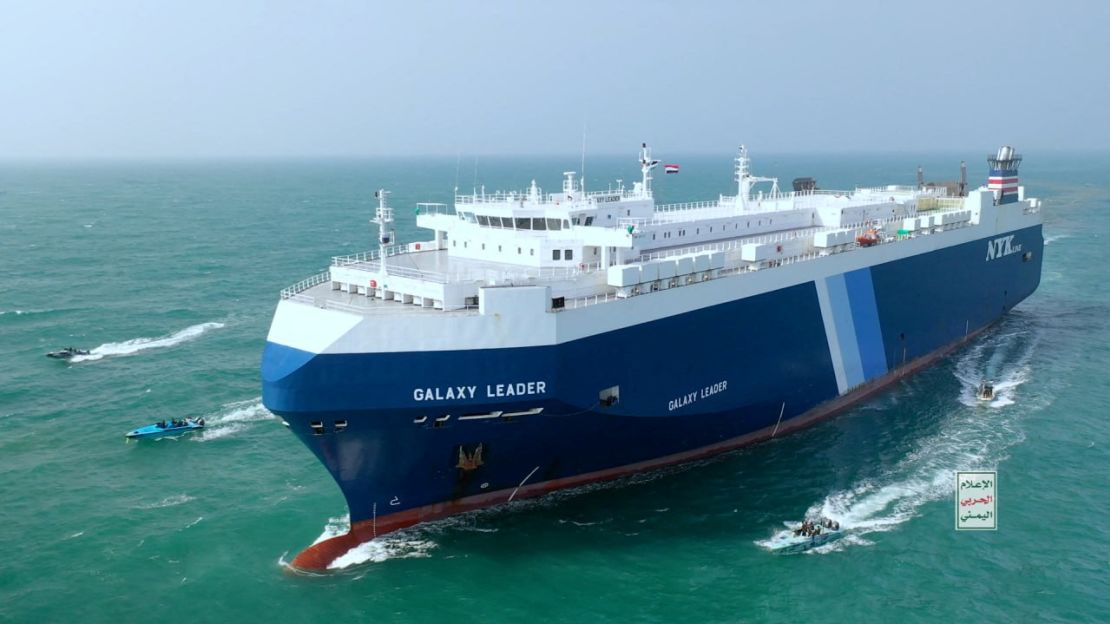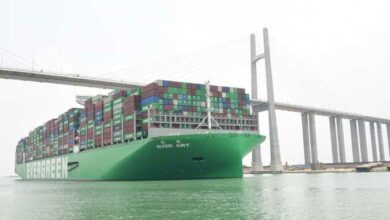
Attacks on container vessels in the Red Sea have been wreaking havoc on one of the world’s most important trade routes for weeks, and shipping giant Maersk warned Thursday that the disruption could last as long as a year.
Iran-backed Huthi militants stepped up their attacks on ships in late November in retaliation for Israel’s war against Hamas.
The resulting delays and extra costs for shipping companies have fueled concerns that consumers, still struggling after a prolonged spell of rampant inflation, could be hit with fresh price rises.
There has been an “almost wholesale exodus” of larger container ships from the Red Sea and the adjoining Suez Canal, Richard Meade, editor-in-chief of shipping publication Lloyds List, told CNN. Those ships, which ferry everything from trainers to mobile phones from manufacturers in Asia to customers in Europe, have been taking longer routes to avoid the area.
That exodus is a big deal: The Suez Canal, which connects the Red Sea to the Mediterranean Sea, accounts for 10-15 percent of world trade, which includes oil exports, and for 30 percent of global container shipping volumes.
But the overall impact on shipping costs and supply chains is far less severe than at the height of the pandemic, analysts tell CNN. Still, the current crisis has left its mark, prompting Tesla (TSLA) to pause some of its production because of delays in the delivery of car parts to Germany, and Swedish furniture giant Ikea to warn of possible product shortages.
“We are not near a resolution or a situation where we can see that the international community is able to provide a safe passage,” Maersk CEO Vincent Clerc told CNN’s Julia Chatterley in an interview Thursday. “So I think this is going to be with us for quite a few months.”
Weeks of delays
Peter Sand, chief analyst at Xeneta, an ocean and air freight data firm, estimates that about 90 percent of the usual container ship capacity passing through the Red Sea and Suez Canal has been rerouted around the southern tip of Africa.
Around one-quarter of all bulk carriers, which transport vast quantities of dry cargo such as grain or cement, and a quarter of tankers, carrying oil or natural gas, have made the same diversion around South Africa’s Cape of Good Hope, he said. That’s added as much as two weeks to a typical East-to-West journey for container ships, and 18 days for slower bulk carriers and tankers.
There is some evidence that shipping customers are choosing to fly their goods rather than export them by sea, because of the disruption, according to Sand.
“We do see fashion companies and those selling apparel in Europe deciding that some of their clothing lines will go airborne, instead of going seaborne, and that’s when you really talk about escalating costs,” he said. “That is 10 to 20 times more expensive.”
Data from Xeneta shows an uptick in the volume of cargo flying from Vietnam, a manufacturing hub for clothing, to northern Europe over the past three weeks.
$1 million more per ship
Adding another few thousand miles to shipping routes has increased fuel and insurance costs, as well as charter fees and wage bills.
Sand at Xeneta estimates that it costs carriers — companies like Maersk and Hapag-Lloyd — an extra $1 million per vessel to make a round trip around the southern tip of Africa, with the vast majority of that figure accounted for by higher fuel costs.
Carriers have consequently hiked the freight rates paid by companies to have their goods transported on their vessels and have also tacked on emergency surcharges.
Global shipping costs per a typical 40-foot container stood at $3,786 this week, up 90 percent from the same time a year ago, according to the Drewry World Container Index.
For the same-sized container traveling from Shanghai in China to Rotterdam in the Netherlands, the cost has jumped 158 percent compared with a year ago to hit $4,426.
However, the current crisis pales in comparison with the one that preceded it.
Global container shipping costs are less than half their level during the coronavirus pandemic, which peaked at $10,380 in September 2021.
At that time, consumers were still mostly stuck at home, flush with savings and had little else to do but spend on goods.
“We’re in a far better place than we were in the pandemic,” Simon MacAdam, deputy chief global economist at Capital Economics, told CNN.
Global demand for goods rose at an “unprecedented” speed in 2021, he said, but it has since fallen back to historically normal levels, while higher interest rates have lowered consumers’ appetite for big-ticket items usually paid for on credit.
Maersk’s Clerc also told CNN that the current shipping crisis was “not a repeat” of what happened during the pandemic. This time, the disruption is “much more targeted, much more limited in scope,” he said.
Will inflation spike again?
Many retailers can be expected to pass on higher freight costs to consumers, according to Sand at Xeneta, particularly those with smaller profit margins.
Even so, he said, container shipping is “very cost-effective” as many goods can be packed into a single shipping container. An extra few thousand dollars per container, for example, can be spread across hundreds of products, pushing up the retail price per product only by a fraction.
On Monday, the Organisation for Economic Co-operation and Development said that if freight costs remained high, consumer price inflation across its 38 member countries could rise by 0.4 percentage points after about a year.
This not uncommon sanguine outlook is partly down to huge growth in the size of the global shipping fleet last year, according to MacAdam at Capital Economics, a trend he expects to continue over 2024. Carriers, unable to keep up with demand during the pandemic, have placed “massive orders” for new vessels, he said.

This has kept a lid on freight costs. “The increase in offered (shipping) capacity in the market continues to put pressure on the rates,” Maersk said in its latest financial results Thursday.
But the inflation outlook will darken if the Israel-Hamas war spreads to other countries in the region, threatening global energy supply, or if oil prices — which have barely budged since the Houthis ramped up their attacks — start to rise.
Record oil production in countries including the United States and Canada, as well as weak projected global demand have kept prices in check.
Fewer oil tankers have avoided the Red Sea than container ships, which the Houthi militants more closely identify with Western countries allied with Israel. That may be changing, however.
Last week, Meade at Lloyds List observed a 40 percent fall in the number of crude oil tankers going through the Bab-el-Mandeb strait, the narrow waterway leading into the Red Sea from the south, compared with the previous week.
“It is considered to be a risk and there is no real confidence amongst the ship owners that it is safe, regardless of how the nationality is being advertised,” he said.




